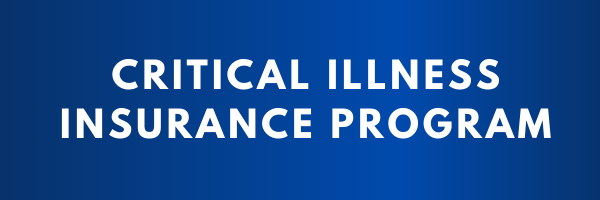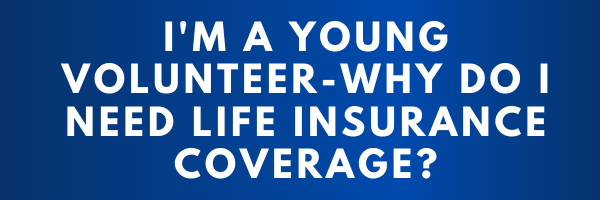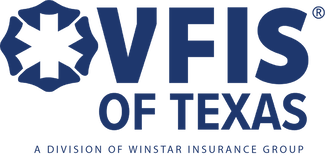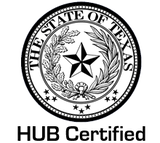|
Energy efficiency is a growing concern in the United States with increased awareness about pollution, consumption and their effects. But making homes and business more energy efficient can save money too. There are limited amount of resources available and more and more people using them up. You can help future generations enjoy the same standard of living we've experienced by taking action and start going green.
Click on the infographic to learn how much energy is used each year on office buildings, stats on global warming, how much water and energy is wasted and what you can do to help save energy, save money and save the planet. Print the infographic by clicking here. Use this infographic on your site, just follow the instructions below.  Infographic authored by VFIS, offering specialized insurance to emergency service organizations. To view the original post, see the original Going Green infographic.
Use this graphic for FREE on your site!
You may use the infographic above on your website, however, the license we grant to you requires that you properly and correctly attribute the work to us with a link back to our website by using the following embed code. Embed Code<div > <a href="http://www.glatfelters.com/emarketing/Infographics/Going-Green-VFIS.png" /> <img src="http://www.glatfelters.com/emarketing/Infographics/Going-Green-VFIS-thumbnail.png" alt="Going Green" /></a><br/> Infographic authored by VFIS, offering <a href="http://www.vfis.com/"> specialized insurance to emergency service organizations</a>. To view the original post, see the original <a href="http://www.glatfelters.com/emarketing/Infographics/Going-Green-VFIS.png"> Going Green infographic</a>.</div>
0 Comments
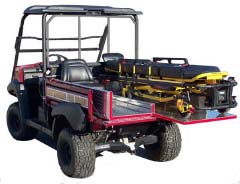 Written by Roy C. Mercer (VFIS of Texas Director of Training, Education, and Safety) for Texas Firemen magazine. 2014 Texas Firemen magazine is available for SFFMA members. You can become a member by signing up at www.sffma.org. The commonality between our emergency vehicles and all-terrain vehicles and utility vehicles (ATVs/UTVs) is that “they are still vehicles”. Providing a fast, fun to ride, low cost, easy to deploy, and navigable option, ATVs/UTVs are becoming more noticeable in emergency service organizations (ESO) across our state. Each ESO should place a high-level of seriousness towards the driver’s experience and training on this response vehicle. Additionally, the ESO should equally recognize that conversion of an ATV/UTV to an emergency vehicle encompasses a great deal of requirements. The ESO should consult the manufacture before embarking on the conversion process by adding a tank or an EMS skid unit themselves. Utilization of ATVs/UTVs in our service has been around approximately 30 years now. As ATV/UTV equipment evolved, personal protection concerns among manufactures has increased. Even with warning safety labels and safety advertisements, personnel are still rejecting these important messages and are treating ATVs/UTVs as recreational vehicles. Furthermore, ESO’s are placing personnel in the driver’s seat for emergency response while never considering the education processes and/or maintenance needs before deployment. Emergency service organizations must perform an assessment to identify proper personnel protective equipment (PPE) purchase needs and/or offer the appropriate safety equipment for the response. The State of Texas requires helmets worn to meet the United States Department of Transportation standards. Additionally, gloves and goggles must be worn while transferring these vehicles across public terrain (Texas law, Section, 663.034). Emergency service personnel are using these ATVs/UTVs like the bicycle theory: Once you ride one once, you’re good to go for life. This theory does not help reduce liability for the ESO. The ESO cannot ASSUME anything; personnel must be aware of dangers when driving, operating, and/or riding in or on these vehicles. Many causes of accidents on ATVs/UTVs fall into two categories: 1) Operator behavior and 2) Equipment failure. The U.S. Consumer Product Safety Commission, (Sarah Garland, February 2013), reported that from January, 1982 to December, 2011, 11,688 ATV/UTV deaths transpired across the U.S., with 571 happening in Texas, which is one of the highest death tolls of any state. Sadly, these fatalities occurred across all age groups. 35% of deaths occurred in those 16 years and younger, meaning that 65% of ATV/UTV fatalities featured victims over the age of 16. These numbers are shouting to the emergency organizations across the state, and we as ESO’s should take preventive proactive measures to avoid becoming part of such tragic statistics. We encourage the implementation of preventable measures be done early, before the deployment of an ATV/UTV. As a risk management process, the utilization and research for the types of duties the vehicle is to endure are a high priority when developing specifications for the purchase of ATVs/UTVs. ESOs tend to gravitate towards the purchase of utility vehicles because it offers off and on road terrain diversity during operations at a low cost. In addition, these vehicles offer multiple passenger compartments allowing two – four people to ride in them. UTVs also feature beds capable of carrying skid units, a gas powered water pump, an attack line(s), and a tank of water; usually 50 – 65 gallons capacity (figure 1) for fire suppression activities. Additionally, removing the fire skid units allows diversity for converting the vehicle into an EMS vehicle, allowing for patient transport and medical supply to be place on-board (figure 2). Our recommendation is to consult with a professional manufacture of these vehicles, making sure that the load capacity is within the vehicle limits. Personnel and all the safety equipment should be included when determining this capability. When consulting with the manufacture, the ESO’s should be very specific about the equipment carried on the AVTs/UTVs. Some example considerations are night and day operations, spot light bars placed on top, flashlights and mounts, PPE, and extra fuel tanks for long distance responses. If the ESO utilizes these vehicles as an emergency transport vehicle, all safety equipment should be on-board for the patient and family members. At a minimum, two personnel should respond within the vehicle at all times. Communication equipment should also be available as the vehicle travels to remote locations where signals may or may not be present, depending on location. First aid and/or survival kits need to be on-board as well as suntan lotion, flame blankets, extra drinking water, fire extinguisher, responder medication and snacks, considering the activity and terrain they will be traversing. Determining the appropriate type of PPE base on terrain operations is very important for the safety of personnel. For example, if your organization responds in a heavy wooded or weeded area, you may consider heavier leg and arm protection be worn. Additionally, a DOT certified helmet with built in face shield or eye protection, as well as sunglasses in bright areas, and gloves should be considered. What about the terrain? Geo mapping is very important, giving the preplanning of the terrain a higher priority. The ESO will be traversing in areas that are not common. The development of preplans of recreational locations are crucial; where people hike, ride mountain bikes, horses, dirt bikes and other entertaining activities. When traveling off-road, most recommend traveling on dirt and/or areas traveled by other vehicles, including rutted and/or worn terrain. If this cannot be accomplished, a partner should walk in front of the vehicle and determine whether the vehicle can proceed forward in the unknown area safely. Remember, we usually respond down roadways within our district. When we go off-road in an unknown terrain, we could accidently travel in high water areas or fall from a shift of dirt or rock formation causing more injuries and even death. Annual training is necessary, and identifying the risks associated with ATVs/UTVs is no different from other emergency vehicles within our fleet. Traversing over different types of terrains, the correct operations and maintenance procedures, personnel performance measures, and the proper use of PPE are very important subjects within the educational process. At a minimum, each person should attend 4-hours of classroom with another 4-hour of driving an obstacle course (off-road preferred). The classroom portion should cover the latest accident trends, safety equipment, terrain identification and/or mapping, maintenance processes, operation, driver qualifications, and lastly, trailer operations, which are equally important. Skill practice should consist of a preventive maintenance checklist, a cone driving course, flat field and/or level ground area, on-road surface and then an off-road guided experience (figure 3), and a post maintenance check and cleaning be performed. Lastly, all ATVs/UTVs are important members of our vehicle’s fleet. Personnel should be aware of the risks associated with the utilization of these vehicles and response areas they will be traversing. All safety equipment worn and standard operating procedures developed and enforced should be reviewed by all personnel. These vehicles are not for recreation. They are for performing an important task, and the ESO’s implementation of best practices before the deployment of these vehicles is a proactive approach. Remember, the safe response begins before the response. By Bill Jenaway, Vice President, VFIS Education, Training and Consulting and President CFSI; Sean Carroll, Legislative Director CFSI; and Bill Webb, Executive Director CFSI
The recently enacted Patient Protection and Affordable Care Act (as amended by the Health Care and Education Reconciliation Act of 2010), has implemented a number of key changes that alters access to health care for individuals. The Act also has a number of impacts imposed to help pay for these changes in health care coverage. One of these is known as the “Cadillac Tax.” This provision imposes an annual 40 percent excise tax on plans with premiums exceeding $10,200 for individuals or $27,500 for a family (not including vision and dental benefits) starting in 2018. The thresholds may be increased depending on actual medical inflation between 2010 and 2018 using a measure that looks to the Federal Employees Health Benefits (FEHB) program. The thresholds may also be increased for individuals in high-risk professions and pursuant to an age and gender adjustment. It is anticipated that the IRS will provide additional guidance regarding the thresholds and the adjustments to the threshold in its regulations. The term Cadillac is used to describe the plan similar to that of the Cadillac automobile. The automobile has been known for its luxury, implying the Cadillac Health Care Plan is a luxury plan. Therefore, a Cadillac plan is any unusually expensive health insurance plan. The term gained popularity in the early 1990s when debates were occurring over health care plans during the Clinton Administration. This was followed by debate over possible excise taxes on Cadillac plans during the Obama Administration Health Care reform proposals. It should also be noted that bills proposed by Clinton and Obama did not use the term Cadillac. The tax will apply to both fully insured and self-funded plans. For fully insured coverage that exceeds the applicable threshold, the issuer is responsible for paying the 40 percent excise tax. If it is self-funded coverage, the plan administrator (typically the employer) is responsible for paying the excise tax. The threshold is adjusted for individuals in high-risk professions, but only if a majority of employees covered by the plan are engaged in a high-risk occupation. This means a health care plan that covers only members of a fire department would be eligible for the increased threshold, but a plan that covers all municipal employees may not be eligible for increased threshold. Additional information about the thresholds and permissible adjustments will be addressed by the IRS in its regulations. These high-value health plans are typical of the type of plans provided to high risk organizations such as fire and police agencies. So the first question is – Do you qualify? The second question is - Are you ready? Taking care of emergency responder personnel is a responsibility of management and being safety/health conscious is a responsibility of both personnel and management. Thus, everyone in the organization plays a role in health care and in upcoming discussions of the Cadillac Tax and its impact. This issue will most likely be a discussion point during benefit discussions, contract negotiations, budgeting and strategic planning. Even though the Cadillac Tax will not be effective until 2018, emergency service organizations may want to begin working with agents, brokers, consultants and insurers now to determine ways to manage the implications of the tax on benefit programs. This is particularly true if the organization has personnel engaged in future business planning activities, including collectively bargained plans where negotiations must take place before changes can be made to a plan. It is important for all those involved to have an understanding of the issues, the impacts on the responders and the organization, the options available and the decisions to make. Read the entire VFIS fall newsletter here. Fire and emergency service organizations throughout Texas have relied on VFIS’s Accident and Sickness program to cover emergency services related accidents and illnesses including heart attacks. However, many heart and circulatory related claims (including Cancer) may not be covered by Workers’ Compensation or Accident & Sickness policies.
Now, with the VFIS Critical Illness Insurance Program, Texas' emergency service personnel can receive a lump sum cash benefit when diagnosed with a heart attack, stroke or life threatening cancer. Learn More: http://www.vfistx.com/critical-illness.html 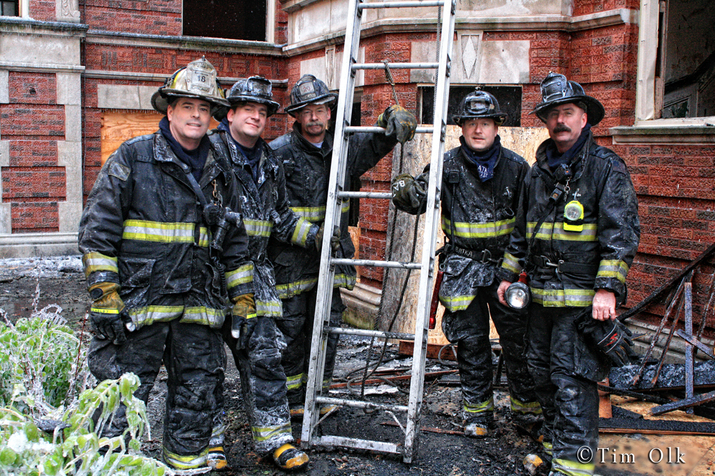 The start of the Volunteer Retention Study sponsored by the Texas Emergency Services Retirement System in partnership with VFIS of Texas and SFFMA has been postponed. According to Michelle Jordan, Executive Director for TESRS, the start date for data collection has been postponed because not enough departments have signed up for a statistically valid sample. Currently, 47 departments have agreed to participate, which is short of the goal by about 120 departments. We’re hoping that a strong push in February will enable a March 1 start date. In addition to a late start, the monthly reporting has been eliminated. The data to be collected has been revised to include current roster numbers and demographics, as well as year-end numbers from the previous five years, and retention strategy information. By eliminating the monthly reporting, the time and effort required to participate has been greatly reduced. Any volunteer fire department in the state can participate, as well as combination departments (only information on the volunteer side will be reported). This study will predict statewide and regional declines over the past five years, as well as provide demographic information that may be helpful. In addition, retention strategy information will be collected and shared. This is an important study to determine whether or not pension programs and other incentives help to retain volunteers in Texas. If you have any questions or would like to participate in this study, please contact TESRS at study@tesrs.texas.gov for more info. Thank you for your interest! AUSTIN, TX – VFIS of Texas and Texas Mutual Insurance Company recently awarded grants of up to $2,500 to 39 volunteer fire departments across Texas. Funds awarded through the Firefighter Safety & Training Grant Program will enable these departments to participate in a certification program and training to support critical workplace safety training.
Fifty-eight volunteer fire departments applied for the grant and the 39 grantees were selected based on their financial needs and the impact the funds would have in their safety and training efforts. VFIS of Texas and Texas Mutual Insurance Company partnered with the State Firemen’s & Fire Marshals’ Association of Texas (SFFMA) to manage the application process and select the grant recipients. “We are very fortunate and thankful to VFIS of Texas and Texas Mutual for this grant, which will help us pay our 2014 annual membership dues to SFFMA,” said Jack K. Rymer, Fire Chief of Possum Kingdom West Side VFD. “This is a very important association that greatly benefits volunteer fire departments such as ours by providing certified training courses and other training programs to make our department safer and more professional. Like many volunteer fire departments, our department is short on resources and this grant money goes a long way in helping us meet our budget.” In addition to Possum Kingdom West Side VFD, the following volunteer fire departments were awarded grants: Bowman Community VFD, Boyd Fire Rescue, China Spring VFD, City of San Diego FD, Clint FD, Cookville VFD, Cottonwood Shores VFD, Crafton VFD, Cresson VFD, Daingerfield FD, Indian Creek VFD, Jamaica Beach VFD, Kaufman VFD, LaRue-New York VFD, Levita FD, Lone Star VFD, Mico VFD, Nevada VFD, Paducah VFD, Pleasant Grove VFD, Rising Star VFD, Rocksprings/Edwards County VFD, Sand Hills VFD, Santa Rosa VFD, Santo Fire and EMS, Six Mile Community VFD, Somervell County Fire, South Ector County VFD, Sunset VFD, Terrell VFD, Tolar VFD, Trout Creek VFD, Turnersville VFD, Village of Pleak VFD, Wayland VFD, Westminster VFD, Whitney VFD and Windthorst VFD. Grantees will be recognized at the SFFMA Conference June 6-11, 2014 in Lubbock, Texas. 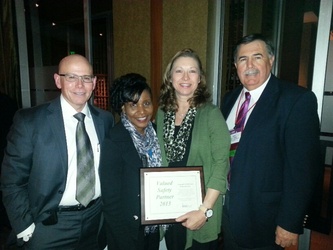 Barbara Marzean, president of VFIS of Texas, recently received the “2013 Valued Safety Partner” Award from Texas Mutual Insurance Company in recognition of the Emergency Service Organizations Safety Group, its safety committee and VFIS of Texas / Regnier Insurance for their commitment and promotion of safety. You can learn more about this Safety Group by visiting www.esowcgroup.com. Pictured: Woody Hill, Texas Mutual VP Safety Services; Angela Gardner, Texas Mutual Safety Services Training Consultant; Barbara Marzean, ESO Safety Group Master Agent; and Jack Ogden, Texas Mutual Sr Marketing Specialist 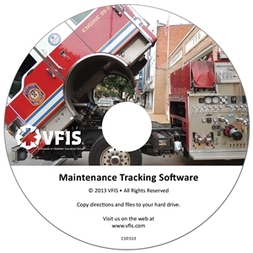 Record keeping is an important part of a department’s maintenance program. The NEW VFIS Maintenance Tracking Software can help emergency service organizations track and store the data by creating maintenance tickets. It is simple to use, just copy the directions and files to your hard drive and start creating maintenance tickets. VFIS Clients can order this new program (item C10:513) at http://shop.vfis.com or by calling 800.233.1957 ext. 7680. As promised here is a copy of The Power of Social Media PowerPoint we presented during the 2013 State Benefits Summit @ TEEX in College Station. This was designed as a crash course in social media, so it covers the basics as well as best practices for many different social networks. Please feel free to SHARE it with anyone in need, however we ask that you please credit us if doing so. Enjoy! If you have any questions, please e-mail Kash Sarkaria at ksarkaria@vfistx.com. If you are a young volunteer and have joined an Emergency Service Organization (ESO) that offers a Length of Service Awards Program (LOSAP), it is likely that you have been asked to complete paperwork to put a life insurance policy in place on your behalf. If so, you may have been putting it off because you have a thousand other things to do.
It is important to remember that your ESO’s LOSAP was custom-designed to meet the unique needs of your organization. Very basically, the LOSAP provides active volunteers with benefits in the event of death, disability and retirement. To a young person, retirement seems a lifetime away. However, since most LOSAP plans provide a death benefit, there is immediate financial protection available for you and your loved ones. Sudden tragedies know no age limitations. In the event of your untimely death, a death benefit offered by the LOSAP provides significant financial relief to your family no matter what the cause of death.* You do not have to die in the line of duty to qualify for a death benefit provided by the LOSAP. You are never too young to look out for your friends and family. Take the time to become an active participant in your LOSAP by completing a life insurance application today and remember to keep your beneficiary designation current! What you do now will affect your loved ones later. For more information on Length of Service Awards Program and to contact us, CLICK HERE. *Certain policy exclusions may apply MORE INFO: VFIS Benefits News (FALL 2013) |
|
|
© 2023 WinStar Insurance Group
13625 Ronald W. Reagan Blvd. Building 3, Suite 100 Cedar Park, Texas 78613 (512) 448-9928 info@vfistx.com |
Home | About Us | Insurance | Training | Life & Health | Resources | Claims | News | Contact Us | Mission & Values | Privacy Statement
|
IMPORTANT NOTE: This Web site provides only a simplified description of coverages and is not a statement of contract. Coverage may not apply in all states. For complete details of coverages, conditions, limits and losses not covered, be sure to read the policy, including all endorsements, or prospectus, if applicable. Coverage CANNOT be bound, amended, or altered by leaving a message on, or relying upon, information in this Website or through E-Mail.
Licensed & doing business in the following states only: Texas, Oklahoma, New Mexico, Arkansas, & Mississippi
Licensed & doing business in the following states only: Texas, Oklahoma, New Mexico, Arkansas, & Mississippi

